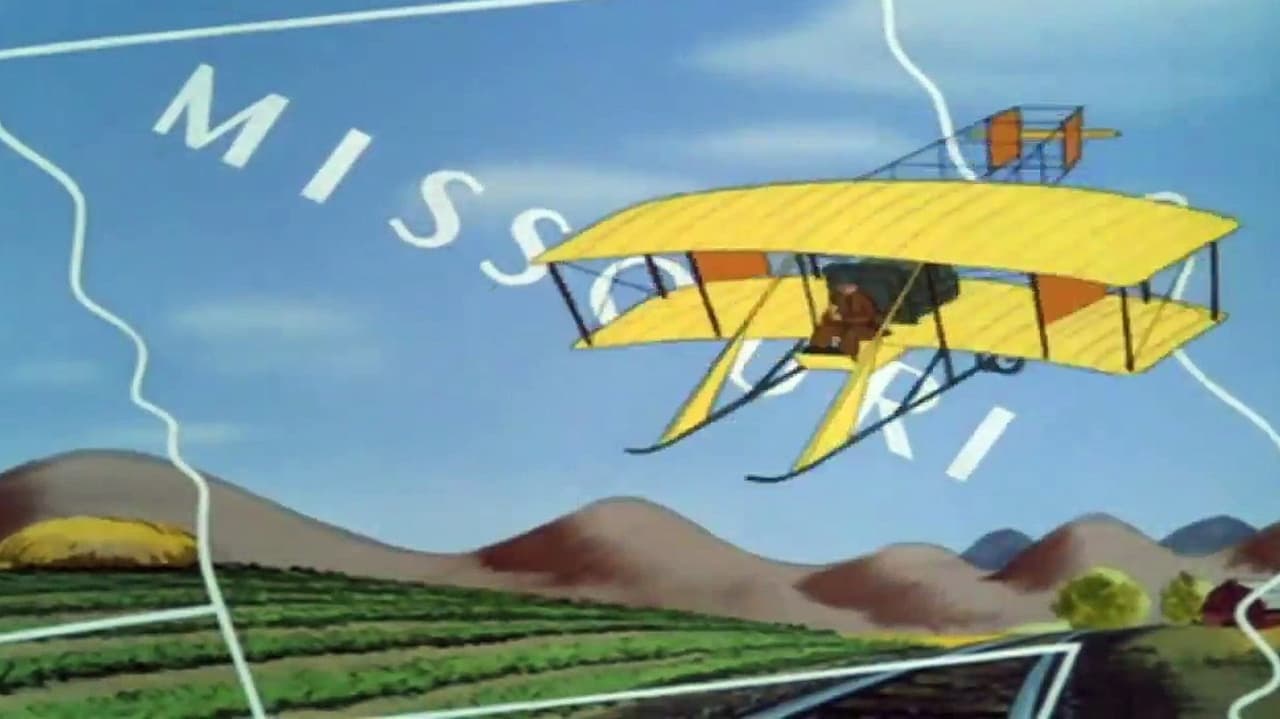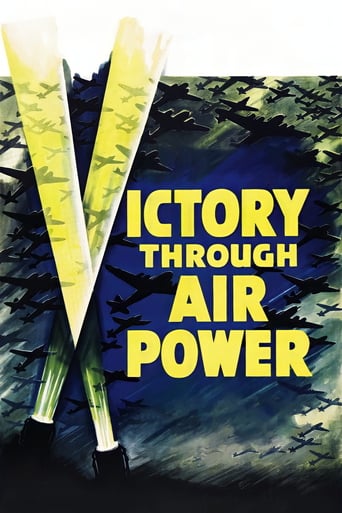

Horrible, fascist and poorly acted
... View MoreThis movie was so-so. It had it's moments, but wasn't the greatest.
... View MoreAlthough I seem to have had higher expectations than I thought, the movie is super entertaining.
... View MoreThrough painfully honest and emotional moments, the movie becomes irresistibly relatable
... View MoreVictory Through Air Power (1943)*** (out of 4) With WWII going full strength, everyone in Hollywood did what they could to bring attention and information to the screen and that includes Disney. This animated feature is pretty entertaining in its own right as we learn about the history of aviation and then go into details on how planes are playing a major role in the war.If you've seen any of the documentaries from this era then you're really not going to learn anything new here. The "Why We Fight" series pretty much covered this stuff in much greater detail but of course the one difference is that this film is animated. The Disney crew really did a terrific job with the animation as it's up to their usual high standards. Fans of Disney will certainly enjoy the animation but WWII buffs will also like the way the documentary shows the bombings at Pearl Harbor and the animated maps on the various issues America faces going up against Japan and Germany.
... View MoreIt's hard to endorse a film about a war involving such blood, sacrifice, and hatred when it comes to us in the form of a cartoon. Elmer Fudd is the proper subject of a cartoon, and Mickey Mouse, and The Flintstones.Yet this is probably the most famous cartoon to come out of World War II, made by the Disney people in a style, about a subject, far different from "Snow White and the Seven Dwarfs." There is no newsreel footage at all, and virtually no still photographs. The whole thing is a cartoon. And the cartoons are both informative and reasonably accurate. A Stuka looks like a Stuka, not like a generic "airplane." Even a lesser known airplane like the Japanese G-4 "Betty" looks like what it's supposed to be.And our chief source of information, aside from Art Baker's narration, is Alexander P. de Seversky, aviation expert, industrialist, and military strategist. It was his company, Republic, that gave us the P-47 Thunderolt.Here, the live interludes, are lectures from Seversky outlining his thesis in his Russian accent, which goes something like, "Trow avay da bettleships and built airoplens instead." He doesn't argue that air power is an important means of winning the war. To him, it seems to be the ONLY way. His presentation is very simple and clear but in case you don't get his point, the cartoons spell it out for you in lurid color. A chimpanzee would get it.Of course this was released in 1943, a year during which the major turning points of the war began -- new Allied anti-submarine defenses, Stalingrad, the fall of Italy, and a tremendous outpouring of American military equipment. Seversky's logic points up the importance of air power but, without a crystal ball and without access to classified information, he made claims that weren't true.Just a few examples, because he doesn't make that many mistakes. The British and French troops weren't successfully evacuated from Dunkirk because the RAF ruled the skies. The Nazis weren't building ever bigger and more potent submarines. The RAF and USAAF attacks on factories were good at tearing up cities but not at destroying the ability to produce weapons or at breaking the will of the victims. He proudly describes the terrific hammering of a city like Köln without mentioning that our own losses in attacks like these were so appalling that they needed to be temporarily suspended. The guy is full of belief and passion, though, so much so that one wouldn't want to argue with him.He's certainly right about one thing. The longer your supply lines, the less secure your position. It was illustrated in the battles between Rommel and the British in North Africa. Each army would drive the other back until its supplies were unsteady, then they in turn would be driven back to their source. In 1943, Japan's empire covered a vast amount of territory. Seversky examines each possible approach to reaching Japan and rules all of them out. Island hopping? Nope. Too many islands to conquer one by one. Meanwhile Japan would be siphoning off the necessary materials of war from its own conquered territory.But it was that approach that we finally used successfully, once we realized that we could skip many of the stronghold and leave them to "wither on the vine." The two B-29s that dropped the big ones and ended the war took off from Tinian Island, one of the Ryuku chain, that we had reached by island hopping. And the Japanese never did continue siphoning off enough war materials because our own submarines (that is, the USN, not the USAAF) made the sea routs impassable to shipping.I don't mean to be too harsh on Seversky. It's certainly no fault of his that he didn't predict thermonuclear bombs and jet engines. Perhaps his presentation was flawed but his reasoning sound. In 1943, even if you knew about our losses over France, Germany, and Romania, would it have been wise to publicize them? The film is almost like a peek into the past and almost renders our current problems minuscule.
... View Morewhoa. animated explosions. cool. i only gave this film a nine because i hate war. but the animation is way cool.this film is filled with one explosion after another. it becomes almost numbing watching submarine torpedoes slam into battleships and blow up. my favorite scene was the one that had the aircraft carrier being assaulted from above.militarily this film seems like common sense military strategy. it's pretty much explained in layman terms through the magic of Disney cartoon storytelling.the best sequences by far are the ones that take you through aviation history. the animation is terrific.it's a strange film though, and it gives a eerie feeling like you are seeing top secret information or something.mostly i found this film kind of funny because it was so noisy and hawkish. normally i find Disney good natured family fare, this film makes you wonder about the mind of the man.this film is testosteroned and noisy and fanatical about war. makes it even more funny.the military industrial complex is by no means cause for amusement. unless it's done by Disney.
... View MoreNow that Disney's released the Black Cauldron and Melodytime, that leaves very few Disney films that have never been released on a home video format. In fact, it pretty much leaves this and Song of the South.I have seen about half of the movie, in bits and pieces, because of Disney's habit of using clips from older animations in newer compilations. Chances are, if you've ever seen Disney animation showing WWII vintage fighters or bombers, you've seen a part of this film.There's nothing terribly entertaining anymore about Victory- it's as entertaining as any other WWII-era propaganda film. But, given collectors' completist mindset, and given the historical significance of any and all war-era films, I think Disney needs to release this movie; even if it's in an extremely limited mail-order-only release. It needn't come in a clamshell, but Disney owes it to their fans to let them have the opportunity to see ALL of their work.
... View More